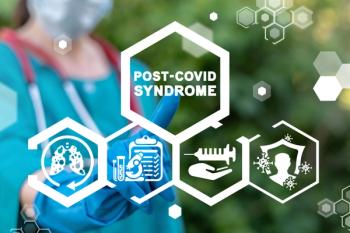
- Vol 37, Issue 5
- Volume 37
- Issue 5
The Spanish Flu Pandemic and Mental Health: A Historical Perspective
Have we learned anything? Looking back at the Spanish flu epidemic as the world deals with the COVID pandemic.
PSYCHIATRY 20/20
-Series Editor: H. Steven Moffic, MD
As we all try to acclimate ourselves to the rapidly changing circumstances brought about by the
Exploring the pandemics
Since the pandemic of the Spanish flu, researchers dedicated themselves to identifying the origins and nature of the virus. It took decades, however, before virologists succeeded. Starting in the mid-1990s,
Until around 1970, historical research about the pandemic had been virtually non-existent. Some novels and popular histories appeared over the decades, but it was Alfred Crosby’s 1976 book
The mental health links
In comparison to other aspects of the pandemic, little research has been done on the long-term impact of the Spanish flu on mental health. One of the few researchers to investigate the subject was historical demographer
Mamelund is among a number of scholars who have noted what many suspect to be a connection between the Spanish flu and a pronounced increase in neurological diseases. By 1919 and 1920, physicians and researchers in Great Britain were already reporting a marked rise in nervous symptoms and illnesses among some patients recovering from influenza infection; among other symptoms, depression, neuropathy, neurasthenia, meningitis, degenerative changes in nerve cells, and a decline in visual acuity were cited.5
Encephalitis lethargica: another connection or vulnerability?
During the acute phase, patients typically experienced excessive sleepiness, disorders of ocular motility, fever, and movement disorders, although virtually any neurological sign or symptom could be exhibited, with day-to-day, and even hour-by-hour shifts in symptomatology. The chronic phase could occur months to years later and was most commonly characterized by parkinsonian-like signs.
Psychiatrists and neurologists first reported encountering encephalitis lethargica symptoms in 1916 and 1917 in Austria and France. By 1919, cases had become common throughout Europe, the United States, Canada, Central America, and India. All told, approximately 1 million people worldwide were affected by encephalitis lethargica between its outbreak in 1916 until the early 1930s. While many clinicians (both at the time and since then) have surmised an association between encephalitis lethargica and the Spanish flu,7 there is no conclusive evidence of causality.
Collateral damage
Some medical and social historians have been tracing connections between the pandemic and the other catastrophic global event of the time-World War I. In this regard, historians have flagged the ways in which the war efforts depleted medical personnel, helped disseminate the virus through the mobilization of troops, and created the conditions for the mutation of an otherwise mild flu virus.8
When it comes to mental health, the historical record shows that the pandemic, like the war, took a toll on the emotional resilience of those not (or not yet) in harm’s way. The massive and sudden loss of life plunged many into a chronic state of helplessness and anxiousness. A large portion of the population were affected by the loss of loved ones. Parents had to come to grips with losing a child (or even several children), while some children suddenly found themselves parentless. In November 1918, 31,000 children in New York City alone had lost one or both parents. For others, the experience left them feeling a mix of guilt, anger, confusion, and abandonment. Surviving health professionals were not immune to such sentiments, with many of them noting that they were haunted by a sense of frustration and grief, even years later.9
Like all mass encounters with infectious disease, the Spanish flu pandemic had its own unique features. If history teaches us anything, it is that we should always be measured in how we glean lessons from the past. That said, the example of the influenza of 1918-1920 gives us reason to expect that the present pandemic will carry in tow its own set of mental health challenges.
This article was originally posted April 3, 2020, and has since been updated. -Ed
Disclosures:
Dr Eghigian is professor of history at Penn State University. He specializes in the history of psychiatry and mental health and is member of the Psychiatric Times Editorial Board.
References:
1. Taubenberger JK.
2. Crosby AE.
3. Mamelund SE.
4. Mamelund SE.
5. Henry J, Smeyne RJ, Jang H, et al.
6. Hoffman LA, Vilensky JA.
7. Beiner G.
8. Phillips H.
9. Bristow NK.
Articles in this issue
over 5 years ago
Early Mortality in SMI: Federal and State Policy Initiativesover 5 years ago
Understanding Child Maltreatmentover 5 years ago
What Leonard Cohen Can Teach Us About Depressionover 5 years ago
Orthorexia Nervosaover 5 years ago
A Question of Characterover 5 years ago
Special Issues for Patients With SUDs Undergoing Surgeryover 5 years ago
Challenges and Strategies in Foster Careover 5 years ago
Care of the Soul in the Time of COVID-19Newsletter
Receive trusted psychiatric news, expert analysis, and clinical insights — subscribe today to support your practice and your patients.














